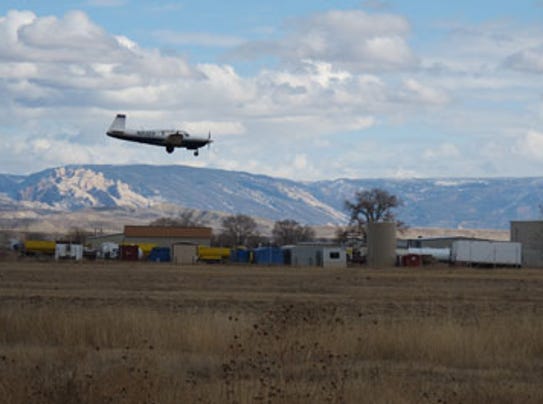U.S. methane emissions may be 50% more than EPA measureWendy Koch, USA TODAY 5:27 p.m. EST November 25, 2013
A study finds U.S. methane emissions are much higher than the EPA calculates, and the reason has a lot to do with methodology. The study suggests the EPA may not be including all methane sources.
 (Photo: Sonja Wolter, NOAA/Cooperative Institute for Research in Environmental Sciences)
(Photo: Sonja Wolter, NOAA/Cooperative Institute for Research in Environmental Sciences)U.S. emissions of methane, a potent heat-trapping greenhouse gas, may be 50% higher than federal estimates, reports a team of Harvard and other researchers today.
Nationwide, emissions from cows and livestock operations may be twice as high as previously thought, and in the south-central region, those from fossil fuel extraction and refining may be almost five times higher than calculated by the U.S. Environmental Protection Agency, according to a study in the Proceedings of the National Academy of Sciences.
"It's really a very clear signal" of how much methane U.S. industry and other sources emit, says co-author Anna Michalak of the Carnegie Institution of Science's Department of Global Ecology. She says the study of the continental USA combines an unprecedented amount of data, taken by federal agencies from the tops of telecommunication towers, with newer statistical tools and meteorological models to calculate how much methane is actually in the atmosphere and where it probably came from.
This top-down approach is notably different from the EPA's bottom-up estimates, which calculate emissions based on the amount of methane typically released per cow or per unit of coal or natural gas sold.
"The main result is significant," says co-author Colm Sweeney of the University of Colorado-Boulder, who leads the aircraft group that does flyovers to measure methane for NOAA's Earth System Research Laboratory Global Monitoring System. Sweeney says it provides an overall picture, quantifies the discrepancy between the two approaches and shows the need for more observation stations.
"We don't know why" there's such a discrepancy, says co-author Steven Wofsy, an atmospheric and environmental professor at Harvard University's School of Engineering and Applied Science. Wofsy says it may be that the EPA is not measuring every possible source such as broken natural gas pipes that are leaking methane.
He says this top-down analysis echoes the overall findings of a study he did in 2006 but offers much finer detail that will be used to create a national methane database. Yet he says while it may indicate what role the natural gas industry plays, it can't distinguish whether emissions come from drilling, processing or refining.
Robert Howarth, a professor of ecology and environmental biology at Cornell University, said the findings show the need to reduce the use of natural gas for heating.
"Natural gas is no bridge fuel," Howarth said in a statement. "When used to generate electricity, natural gas likely has a greenhouse gas footprint similar to that for coal," he said, adding methane is responsible for up to half of all U.S. greenhouse gas emissions.
The oil and gas industry questioned the study, saying there have been marked improvements in drilling since 2007 and 2008 -- the time period that the researchers evaluated..
"Ignoring a half decade of research and innovation is almost comical," writes Steve Everley of Energy In Depth, a research group launched in 2009 by the Independent Petroleum Association of America. Partly because of such advances, he says the EPA revised its emissions estimates downward earlier this year. Everley also says the study doesn't say definitively where the methane is coming from but rather provides an "educated guess" based upon mathematical modeling.
"One study cannot tell us everything we need to know, and this latest research is no different," Everley says.
"This study seems very plausible," says David Archer, a climate scientist at the University of Chicago's Department of Geophysical Sciences who was not involved in the research. He says if there are more methane emissions than previously thought, "that means there's more we can cut."
He says unlike carbon dioxide, which accumulates and lingers in the atmosphere for hundreds of years, methane tends to degrade in a decade or so. Also unlike CO2, he notes, U.S. methane concentrations have held fairly steady in the past 20 years.
Wofsy says a separate study plans to look at methane emissions in Alaska, not included in this paper.
http://www.usatoday.com/story/news/nation/2013/11/25/us-methane-emissions-study-epa/3699735/
![]() 6 new categories and 72 new items added to the shop!
6 new categories and 72 new items added to the shop!![]() 6 new categories and 72 new items added to the shop!
6 new categories and 72 new items added to the shop!




















 Select your theme
Select your theme
